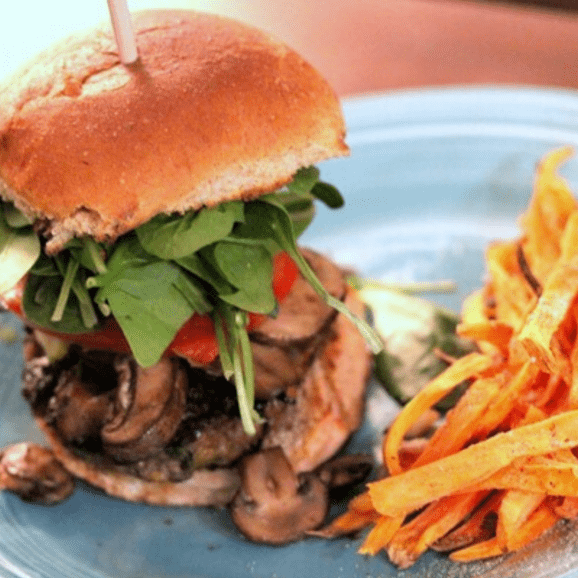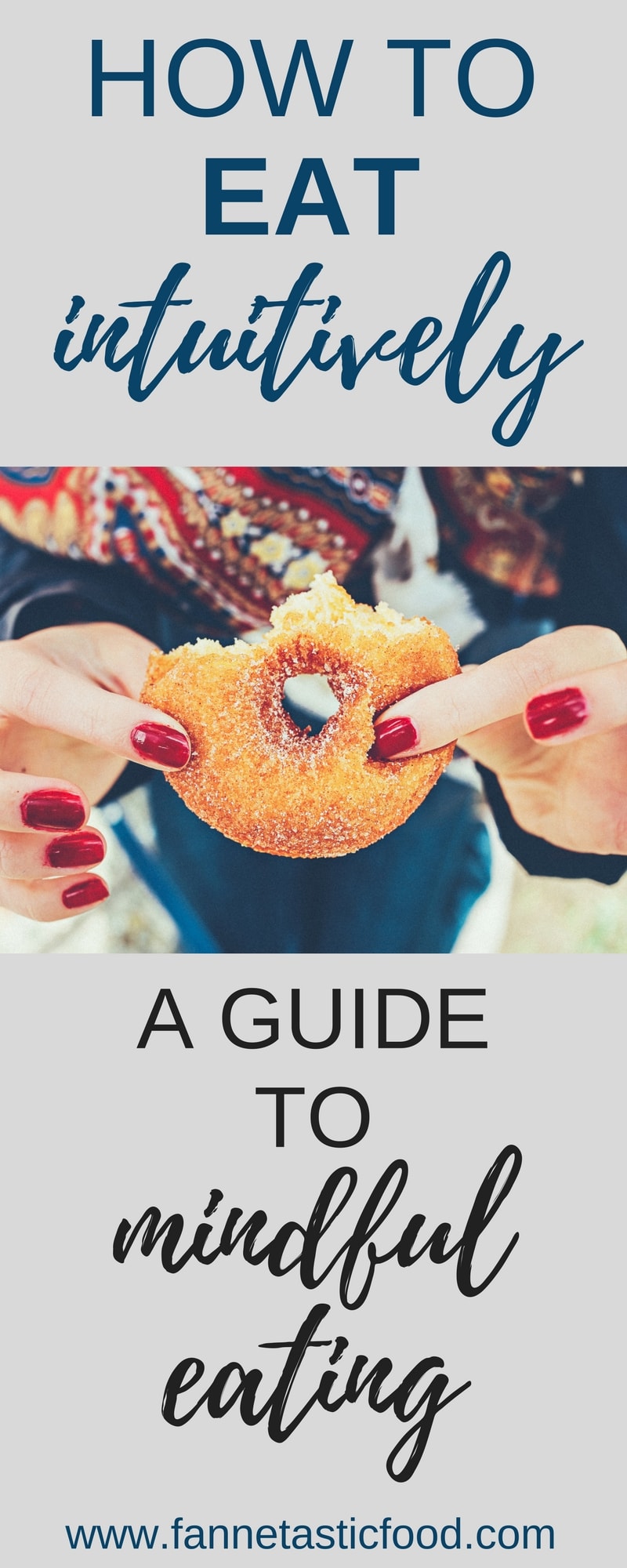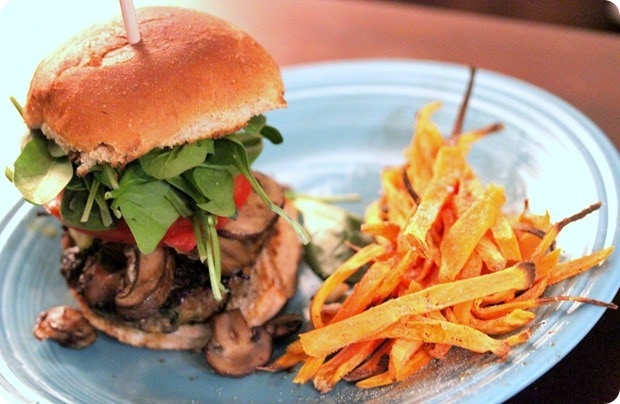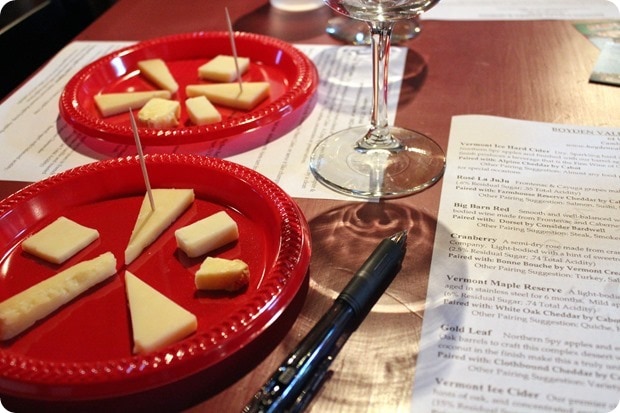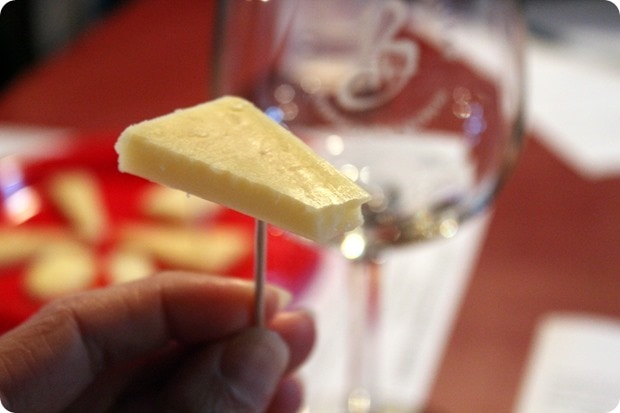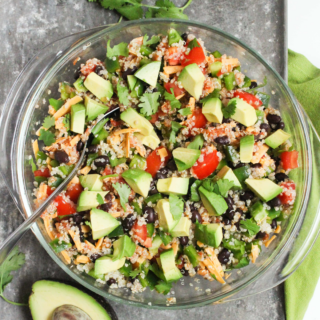As you guys know, I work with my AnneTheRD nutrition counseling clients using an approach called Intuitive Eating. Intuitive Eating is an approach that brings you back to what you used to do when you were a kid, before dieting got involved: eat when you are hungry, stop when you are full. It’s an approach that sounds remarkably simple, but it can actually be quite hard to get used to, especially after years of restriction and letting others make you believe that there are “good” and “bad” foods and that you should feel guilty if you’re not eating perfectly all the time.
Pin this image to save for later!
(Related: I offer a 6 week intuitive and mindful eating virtual program for those interested in working to build healthier relationships with food and their bodies!)
The body is smart – it will tell you, through cravings and hunger pangs, what you need, and when. Some days this certainly might be a kale salad with tons of veggies and lentils; another day, it might be a burger and fries. And that’s okay! If we are really craving something and we deny ourselves, it will likely backfire in overdoing it in that food later on. I see this a lot with clients who leave carbohydrates out of lunch, trying to “be good” – and then overdo it on cookies in the afternoon or evening because they let themselves get too hungry.
One of the most important things you can do to get yourself on the path to eating intuitively is to implement mindfulness, both outside of and during mealtimes. This will not only assure that you’re eating what you need when you need it, but it will also decrease the likelihood of using food as a mask for a deeper emotional need.
Why mindfulness? Because it’s impossible to eat intuitively and avoid emotional eating if you’re totally checked out. Mindfulness means exactly what it sounds like. First, before you eat, when you have a craving, stop and take a pause. Ask yourself: “What do I want right now?” Do you actually need food? Or are your using food to try to distract yourself from what you really need in the moment, like a break from your desk, or some fresh air, or some social interaction, or a hug? We often use food as a distraction when we have uncomfortable feelings we don’t want to deal with. If you aren’t really hungry, then acknowledge to yourself what you really feel. For example, “I feel anxious.” Then, try to pinpoint why you feel that way. You might not be 100% sure, and that’s okay, but try to come up with a reason, and then acknowledge it. For example, “I feel anxious because I have been working since 7 a.m. and I haven’t taken a break.” Or… whatever it is. Simply acknowledging how you feel and sitting with that feeling – it’s okay to have feelings! – goes a long way. Then, think about what, unrelated to food, will actually help to improve your situation, even if only slightly. Often just getting a brief change of scenery – like a 5 minute walk around the block or a visit to chat with a coworker – will make a big difference. Do not feel bad about giving yourself a break if you need it. A bit of fresh air will often completely turn a day around.
On the other side of things, if you do decide that you’re hungry and need to eat something, first, aim to determine what it is you want. Intuitive eating works best if you do not allow yourself to get overly hungry – “hangry”, if you will, so you’ll want to try to eat something just as you start to get hungry. Don’t wait until it’s too late! Then, once you are actually eating, your homework is to once again work on mindfulness.
When I was in Vermont this past weekend for Blog Brulee, we did two really great activities that were wonderful lessons in mindful eating: a wine and cheese tasting and a chocolate tasting.
The easiest way to begin to work on mindful eating during mealtime is to think about approaching your meal like it’s a wine (or cheese or chocolate) tasting. I love telling this to clients because it’s a perfect example of how to mindfully eat – instead of inhaling your food, slow down and really experience it. In the crazy busy world that we all live in, I often hear from clients that they eat their food so quickly and while so distracted that they hardly remember eating it, let alone what it tasted like and whether they enjoyed it. This not only leads to feeling unsatisfied after meals, but it can also often lead to overeating. Here are some steps to work on being more present during mealtime, through the lens of our guided tasting sessions over the weekend. You don’t have to do this at every meal, but work on incorporating it in some way more often than not. Simply slowing down when you are eating goes a long way towards improving intuitive eating – you can’t stop when you’re full if you’re not paying enough attention to know that you’re full, right?
Step 1) No distractions. Turn off the TV, move away from your computer. No multitasking at mealtime, especially as you are getting used to eating more mindfully.
Step 2) Examine the appearance and physical composition of the food, whether it’s a meal, snack, dessert, piece of chocolate, whatever.
Step 3) Smell the food! What does the aroma bring to mind? Close your eyes and try to pick up on the complexities of the food (or drink).
Step 4) Taste the food. Let it sit in your mouth for a moment. How is the texture/mouthfeel? What is the flavor? Does it remind you of anything? Does the flavor change as you chew? Do you like it?
Step 5) What flavors linger in your mouth after you swallow? Are they different from the original flavor of the food? Is there an aftertaste?
Step 6) As you continue eating, start noticing the feeling of your stomach getting more full. Are you starting to feel satisfied? Is the pleasure in the food and its flavor starting to decrease or are you still enjoying it? Take a pause and give your body time to catch up.
Step 7) Stop eating when you start to feel satisfied; don’t wait until you get overfull. You’ll likely find that the more attention you’re paying, especially when having something like a treat, the less you need to enjoy it and feel satisfied before being ready to stop.
If you want to become an intuitive eater and would like some one-on-one support, I’d love to work with you (see my virtual nutrition coaching offerings). Or, check out my Joyful Eating, Nourished Life program – a 6 week virtual intuitive and mindful eating program. For more help with mindful and intuitive eating on your own, here are some wonderful resources that I’ve found:
Books:
- “Intuitive Eating” by Evelyn Tribole, MS, RD and Elyse Resch, MS, RD – the book is fabulous, and they also have an online intuitive eating community
- “Eat Q” by Susan Albers, PsyD – her website Eating Mindfully is also a great resource
Also, here’s a related post here on my blog you guys might like if you missed it: Why You Should Throw Away Your Scale
Are you an intuitive/mindful eater? How did you become one? Any tips for those new to it?


